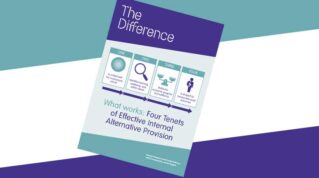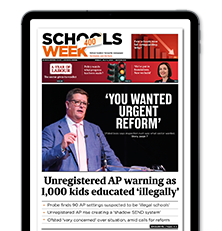Property assessors who usually help set business rates and council tax bands will start checking capacity limits in up to 5,000 schools from July.
“Net capacity assessment” (NCA) visits will take place in all secondary and special schools to get accurate figures of school size until about October 2025, as first revealed by Schools Week.
The visits follow our investigation that revealed the Department for Education does not collect capacity data for special schools, which instead falls to local authorities. It is beginning to collect this from councils this summer.
Government officials said property assessors who have worked on business rate and council tax will be trained to calculate the number of children a school can accommodate.
The Valuation Office Agency (VOA), a HMRC executive agency, provides valuations and property advice to government and councils to support taxation and benefits.
Paula Dixon, a VOA director, told the Schools and Academies Show it has “extensive relevant experience” and has assessors in 30 regional offices.
The DfE will split visits into six tranches, which will be published online. A small number of “testbed” schools will be visited before the summer holidays.
‘Clear, up to date’ data
Laurence Jones, the DfE programme director, said schools, responsible bodies and dioceses will get “clear, up to date” capacity information to help with “decision-making about admissions, estate management and timetabling”.
“For local authorities it will help provide key data on planning and the provision of school places across their particular regions. And for us in the DfE it helps us an awful lot around determining capital funding for school places and decision-making on new schools, school closures and expansions.”
A pilot involving NCA visits in more than 200 mainstream schools last year found 6,000 potential extra places. The pilot results are expected to be published in the coming months.
The DfE previously said figures could show where additional pupils could be accommodated without the need for major building work. It also meant funding for new school places was “targeted most effectively”.
Documents presented to councils in June last year showed officials “envisaged” local authorities would use the assessments as evidence in objections against academies unwilling to increase their published admissions number (PAN).
However, government plans for a beefed-up role for councils over admissions, including “backspot powers” to force trusts to admit children, have since been dropped.
















Your thoughts